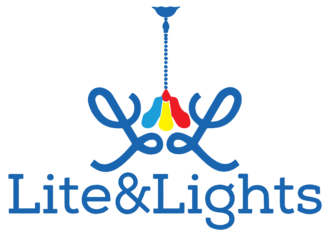D ecorating a room with LED lights can transform the space, creating ambiance, enhancing functionality, and adding a modern touch. Here’s a comprehensive guide on how to effectively use LED lighting to decorate a room:
**1. Understand LED Lighting Types and Features
**a. Types of LED Lights:
- Recessed Lighting: Installed into the ceiling for a sleek look.
- Strip Lights: Flexible LED strips that can be used for accent lighting or under cabinets.
- Panel Lights: Flat panels that provide even, diffused light.
- Smart Bulbs: LED bulbs that can change color and intensity through a smartphone app.
- Wall Sconces: Mounted on walls to provide accent or task lighting.
**b. Color Temperature:
- Warm White (2700K-3000K): Creates a cozy and inviting atmosphere.
- Cool White (4000K-5000K): Provides a bright, clean light suitable for workspaces.
- Daylight (5000K-6500K): Mimics natural daylight and is ideal for reading and detailed tasks.
**2. Define the Room’s Purpose
**a. Living Room:
- Ambient Lighting: Use LED ceiling fixtures or recessed lights for overall illumination.
- Accent Lighting: Install LED strip lights behind furniture, or use LED floor lamps to highlight architectural features.
- Task Lighting: Add LED lamps or adjustable sconces for reading or other activities.
**b. Bedroom:
- Ambient Lighting: Soft LED ceiling fixtures or dimmable lights for a relaxing atmosphere.
- Accent Lighting: Use LED strip lights along the headboard or under the bed frame for a stylish look.
- Task Lighting: Place LED bedside lamps for reading.
**c. Kitchen:
- Ambient Lighting: Bright LED ceiling lights or recessed lights to illuminate the entire space.
- Task Lighting: Install LED under-cabinet lights to brighten work surfaces and countertops.
- Accent Lighting: Use LED strip lights inside cabinets or around the backsplash.
**d. Bathroom:
- Ambient Lighting: Use LED ceiling lights or a combination of overhead and vanity lights.
- Task Lighting: Install LED vanity lights around mirrors for clear illumination.
- Accent Lighting: Consider LED backlighting for mirrors or decorative elements.
**3. Plan Your Lighting Layout
**a. Layered Lighting:
- Ambient Lighting: Provides overall illumination.
- Task Lighting: Focused light for specific activities.
- Accent Lighting: Highlights architectural features or artwork.
**b. Lighting Zones:
- Divide the room into different zones based on function and use appropriate lighting for each zone.
**4. Choose the Right Fixtures
**a. Fixtures:
- Select fixtures that complement the room’s style and provide the right amount of light.
**b. Dimmer Switches:
- Install dimmers to adjust the light intensity based on mood and activity.
**c. Smart Controls:
- Use smart LED bulbs or smart plugs to control lighting remotely and create schedules or scenes.
**5. Install and Position Lights Strategically
**a. Recessed Lights:
- Position them evenly across the ceiling to avoid shadows and ensure uniform lighting.
**b. Strip Lights:
- Place them under cabinets, along shelves, or behind furniture for hidden, indirect light.
**c. Accent Lights:
- Direct them towards features you want to highlight, like artwork, plants, or architectural details.
**6. Add Decorative Elements
**a. Lighting Fixtures:
- Choose fixtures with unique designs to add character to the room.
**b. Lighted Decor:
- Incorporate LED-lit decor items, such as illuminated art or lighted vases.
**c. Color Changing Lights:
- Use RGB LED bulbs or strips to change the color of the light according to the mood or occasion.
**7. Maintain and Adjust
**a. Regular Maintenance:
- Clean fixtures and bulbs regularly to ensure maximum brightness and efficiency.
**b. Adjustments:
- Make adjustments to the lighting setup as needed to accommodate changes in room use or decor.
By thoughtfully selecting and positioning LED lights, you can enhance the functionality and aesthetics of any room. Experiment with different types and placements to find the perfect balance that suits your space and style.














